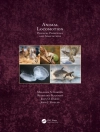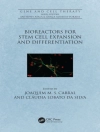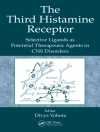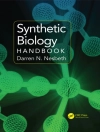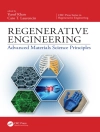Зміст
The Discovery of Sensory Nature of the Carotid Bodies – Invited Article.- Fifty Years of Progress in Carotid Body Physiology – Invited Article.- Carotid Body: New Stimuli and New Preparations – Invited Article.- Enzyme-Linked Acute Oxygen Sensing in Airway and Arterial Chemoreceptors – Invited Article.- Cysteine Residues in the C-terminal Tail of the Human BKCa? Subunit Are Important for Channel Sensitivity to Carbon Monoxide.- Modulation of O2 Sensitive K+ Channels by AMP-activated Protein Kinase.- Hydrogen Sulfide Inhibits Human BKCa Channels.- DPPX Modifies TEA Sensitivity of the Kv4 Channels in Rabbit Carotid Body Chemoreceptor Cells.- Sustained Hypoxia Enhances TASK-like Current Inhibition by Acute Hypoxia in Rat Carotid Body Type-I Cells.- Inhibition of L-Type Ca2+ Channels by Carbon Monoxide.- Effects of the Polyamine Spermine on Arterial Chemoreception.- RT-PCR and Pharmacological Analysis of L-and T-Type Calcium Channels in Rat Carotid Body.- Functional Characterization of Phosphodiesterases 4 in the Rat Carotid Body: Effect of Oxygen Concentrations.- Calcium Sensitivity for Hypoxia in PGNs with PC-12 Cells in Co-Culture.- Modification of Relative Gene Expression Ratio Obtained from Real Time q PCR with Whole Carotid Body by Using Mathematical Equations.- Neurotransmitters in Carotid Body Function: The Case of Dopamine – Invited Article.- Adenosine in Peripheral Chemoreception: New Insights into a Historically Overlooked Molecule – Invited Article.- The A2B-D2 Receptor Interaction that Controls Carotid Body Catecholamines Release Locates Between the Last Two Steps of Hypoxic Transduction Cascade.- Benzodiazepines and GABA-GABAA Receptor System in the Cat Carotid Body.- Evidence for Histamine as a New Modulator of Carotid Body Chemoreception.-Fluoresceinated Peanut Agglutinin (PNA) is a Marker for Live O2 Sensing Glomus Cells in Rat Carotid Body.- Neuroglobin in Aging Carotid Bodies.- Oxygen Sensing and the Activation of the Hypoxia Inducible Factor 1 (HIF-1)– Invited Article.- Upregulation of Erythropoietin and its Receptor Expression in the Rat Carotid Body During Chronic and Intermittent Hypoxia.- Iron Chelation and the Ventilatory Response to Hypoxia.- Systemic Effects Resulting from Carotid Body Stimulation–Invited Article.- Bicarbonate-Regulated Soluble Adenylyl Cyclase (s AC) m RNA Expression and Activity in Peripheral Chemoreceptors.- Developmental Maturation of Chemosensitivity to Hypoxia of Peripheral Arterial Chemoreceptors – Invited Article.- Physiological Carotid Body Denervation During Aging.- Does Ageing Modify Ventilatory Responses to Dopamine in Anaesthetised Rats Breathing Spontaneously?.- The Role of the Carotid Bodies in the Counter-Regulatory Response to Hypoglycemia.- The Respiratory Responses to the Combined Activation of the Muscle Metaboreflex and the Ventilatory Chemoreflex.- Cardiovascular Responses to Hyperoxic Withdrawal of Arterial Chemosensory Drive.- Time-Dependence of Hyperoxia-Induced Impairment in Peripheral Chemoreceptor Activity and Glomus Cell Calcium Response.- Long-Term Regulation of Carotid Body Function: Acclimatization and Adaptation – Invited Article.- Effects of Intermittent Hypoxia on Blood Gases Plasma Catecholamine and Blood Pressure.- Cardioventilatory Acclimatization Induced by Chronic Intermittent Hypoxia.- Ventilatory Drive Is Enhanced in Male and Female Rats Following Chronic Intermittent Hypoxia.- Contrasting Effects of Intermittent and Continuous Hypoxia on Low O2 Evoked Catecholamine Secretion from Neonatal Rat Chromaffin Cells.- Hypoxic Pulmonary Vasoconstriction – Invited Article.- Impact of Modulators of Mitochondrial ATP-Sensitive Potassium Channel (mito KATP) on Hypoxic Pulmonary Vasoconstriction.- Oxygen Sensing in the Brain – Invited Article.- The Central Respiratory Chemoreceptor: Where Is It Located?–Invited Article.- Anatomical Architecture and Responses to Acidosis of a Novel Respiratory Neuron Group in the High Cervical Spinal Cord (HCRG) of the Neonatal Rat.- Systemic Inhibition of the Na+/H+ Exchanger Type 3 in Intact Rats Activates Brainstem Respiratory Regions.- Nitric Oxide in the Solitary Tract Nucleus (STn) Modulates Glucose Homeostasis and FOS-ir Expression After Carotid Chemoreceptor Stimulation.- Airway Receptors and Their Reflex Function – Invited Article.- Airway Chemosensitive Receptors in Vagus Nerve Perform Neuro-Immune Interaction for Lung-Brain Communication.- The Role of NOX2 and “Novel Oxidases” in Airway Chemoreceptor O2 Sensing.- Recruitment of GABAA Receptors in Chemoreceptor Pulmonary Neuroepithelial Bodies by Prenatal Nicotine Exposure in Monkey Lung.- Concluding Remarks.


